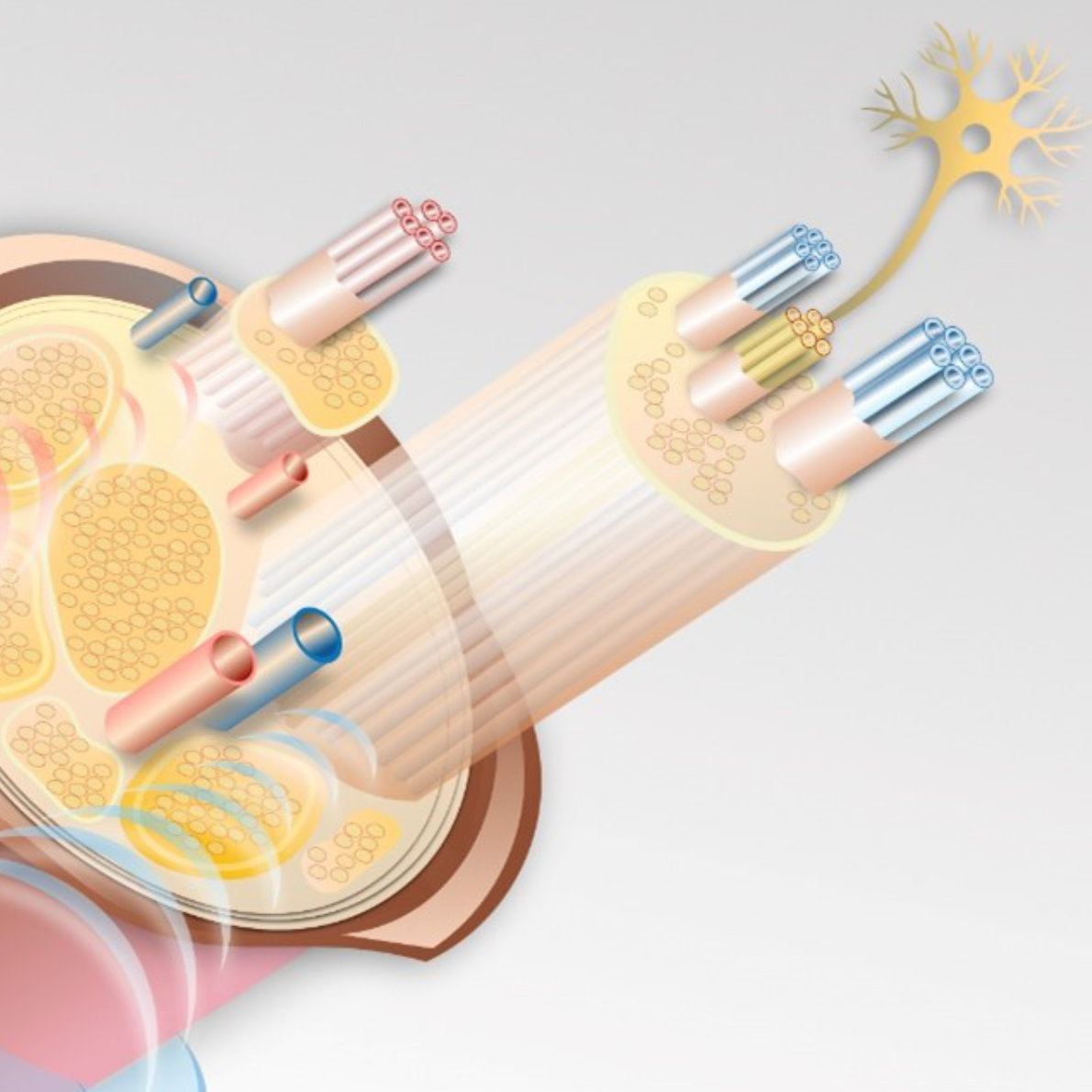Ultrasound for microimplants – enabling personalized medicine with wireless charging
Treatment of chronic autoimmune diseases is no longer limited by the expensive drugs and undesirable side effects. Neuromodulation has been shown to be effective in treating diseases such as rheumatoid arthritis, chronic headaches, asthma or Parkinson's disease. To enable the technology for widespread clinical application, researchers at Fraunhofer IZM are developing a new generation of microimplants as part of the EU Moore4Medical project. These highly miniaturized devices have a special feature: the implants can be charged entirely wirelessly using ultrasound waves.
Moore's Law, which holds that computing power doubles every two years, is a central tenet in the field of consumer electronics. But the axiom, which was first proposed in 1965, to date does not include one important application area of electronics - medical technology. Over several decades new therapeutic approaches emphasizing personalized solutions have been pursued to reduce hospital stays and healthcare costs. One example constitutes the so-called electroceuticals, in which electricity is used to deliver personalized and localized treatment via electronics-enabled microimplants. The advantage of the approach is that it avoids the side effects, common to pharmaceutical treatment strategies which trigger side effects in the body. Researchers at Fraunhofer IZM are now taking the concept further by replacing electricity with ultrasound.
Ultrasonic waves are pressure waves applied extracorporeally, penetrating through the body and thus reaching the microimplant. The advantages compared to conventional battery-charged devices are obvious: Ultrasound can be used to charge implants from the outside, making invasive procedures or wired charging required by conventional implants obsolete. Moreover, the new development is setting new benchmarks in systems miniaturization, with the microimplants able to precisely stimulate nerves just 20 micrometers in size.
By harnessing ultrasound to charge the implants, the Fraunhofer IZM team has found a solution to one of the greatest technological challenges in medical technology: efficient energy transfer. Built-in batteries had hampered miniaturization to date, with the inevitable charge depletion necessitating repeated surgical procedures. Moreover, battery-powered implants equipped with induction coils can only be inserted close to the skin.
In contrast, tiny ultrasound transducers will allow implanting of future microimplants deeper inside the body. The transducers are vibrating in response to an electric field from the outside. The tiny movements generated are converted into electrical energy for the microimplant. The development challenge is to optimally align the vibrating microstructures which will prevent high losses during energy transmission. Furthermore, the structures must be extremely small, as the overall size of the implant cannot exceed a few millimeters.
Ultrasonic transducers, electrodes for recording neuronal activity, and passive components – apart from miniaturizing all these components down to a few millimeters, significant, but not insurmountable, hurdles include integration, and durability. Currently, the Fraunhofer IZM researchers are evaluating the most suitable materials for the prototype. This is a key decision, as the materials must be biocompatible, allow energy transmission through sound waves, and also be suitable for encapsulation. Down the line, equipping the microimplants with groups of several transducers is planned, to allow for a more concentrated emission of the ultrasonic waves.
The Fraunhofer Institute for Reliability and Microintegration IZM is one of the 66 participating companies in the EU-funded Moore4Medical project and is responsible for coordinating and implementing the work package "Implantable Devices". On project completion in June 2023, the project insights and technology advances will be made available via an open technology platform. The platform will provide a toolbox of sorts that can be easily drawn on in other development projects, thereby accelerating time-to-product, improving design, and improving cost-efficiency across medical technology development as a whole.
The core innovations developed by Fraunhofer IZM for this project are very translatable and will likely lead to significant advancement in medical technology development as a whole. Apart from wireless microimplants, a range of specialized applications are possible including organs-on-chip, 3D ultrasound, permanent monitoring using sensors, drug adherence through intelligent delivery, and X-ray-free surgery with optical detection.
(Text: Olga Putsykina)
Last modified:
 Fraunhofer Institute for Reliability and Microintegration IZM
Fraunhofer Institute for Reliability and Microintegration IZM
